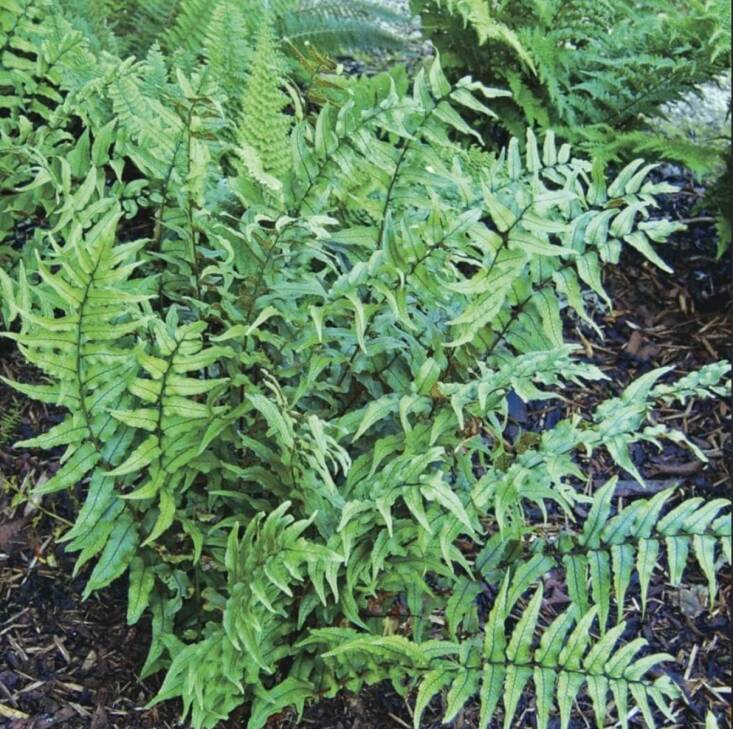I may be biased when it comes to ferns because I grew up with hippie parents in wooded Mill Valley, CA, during the 70s. In our house, ferns hung from the kitchen ceiling and occupied every corner; outside, ferns mingled with redwood trees. But even without that childhood exposure and immersion, I would have liked ferns. They’re lush, easy to grow, architectural, and a bit magical. They also make a solid presence in a woodland, Asian, or modern garden.
Below, five of my favorite ferns (of course, I have way more than five, but I couldn’t resist the alliteration).
Dryopteris erythrosora

This fern goes by “autumn fern” due to the new growth that emerges slightly pinkish before morphing into a festive coppery red, then finally maturing to a deep green. Slow and low growing, it only gets two feet high but can spread by easy-to-manage runners. It also appreciates regular drinks of water and a mostly shaded spot. I like to plant this festive fern with Japanese maples and Pieris. USDA Zone: 4-9.
Woodwardia fimbriata


Known as “giant chain fern”, this large fern can reach close to five feet high and is native to western North America, including California, which is one reason why I like this sturdy, evergreen fern—I am a supporter of planting natives. The other reasons: deer don’t devour it, it can take a wee bit more sun in cool climates, and it makes an impressive clump in a woodland or native garden. Once established, this native isn’t super thirsty but looks better with regular drinks. USDA Zone 8-10.
Polystichum munitum

Another fantastic and easy-to-grow California native, western sword fern is evergreen with slightly arching dark green fronds forming a clump of up to three feet high. In addition to being very adaptable and reliable, it has low water needs. Part sun to deep shade is totally fine. Deer and other pests also seem to leave this one alone. Pro tip: Cut the fronds and add them to flower arrangements. USDA Zone 5-9.
Blechnum brasiliense

While I really like stately tree ferns, sometimes there isn’t room for them. This is why I am a fan of this dwarf tree fern that produces a crown of darker green fronds that start out a striking pinkish red. Growing to four to five feet tall, with a short trunk that emerges with age, the fern likes part shade to shade and regular water. I like to plant this fern in a container as the focal plant, with brightly colored heucheras and begonias growing under it. USDA Zones 10-11.
Cyrtomium falcatum

I use Japanese holly fern in tricky shady spots frequented by deer. This low-maintenance evergreen fern grows to two to three feet tall and as wide, and its stiff but glossy fronds resemble holly leaves. Plant this carefree fern under trees, to hide the bottom of foundations, or in containers. Regular water is best but it can take a little less. USDA Zones 6-10.
See also:
- Gardening 101: Mother Fern
- A Walk in the Woods and a Bracken Fern Forage
- Foraged Bracken: Autumn’s Most Beguiling Floral Design Element











Have a Question or Comment About This Post?
Join the conversation